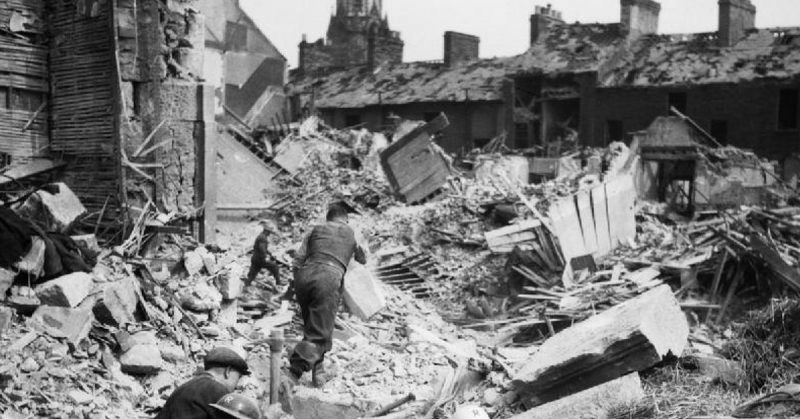New research carried out has shown the extent of the ill-preparedness of Belfast in Northern Ireland, during the Second World War. The city was left vulnerable to an air attack because of a lack of government planning and action.
On the 15th April 1941, Belfast was hammered in one of the largest and most devastating aerial bombardments of World War II. Some 200 Luftwaffe bombers hurled their high incendiary bombs at targets around the city resulting in almost 1,000 people losing their lives and a further 1,500 being injured. This was the greatest loss of life in one night of any bombing raid on the United Kingdom during the war.
The anti-aircraft batteries did not fire upon the German bombers as they believed that the RAF would come to their assistance and they did not want to fire mistakenly on the RAF fighters. Sadly the RAF did not respond, and the bombers dropped their payloads with impunity.
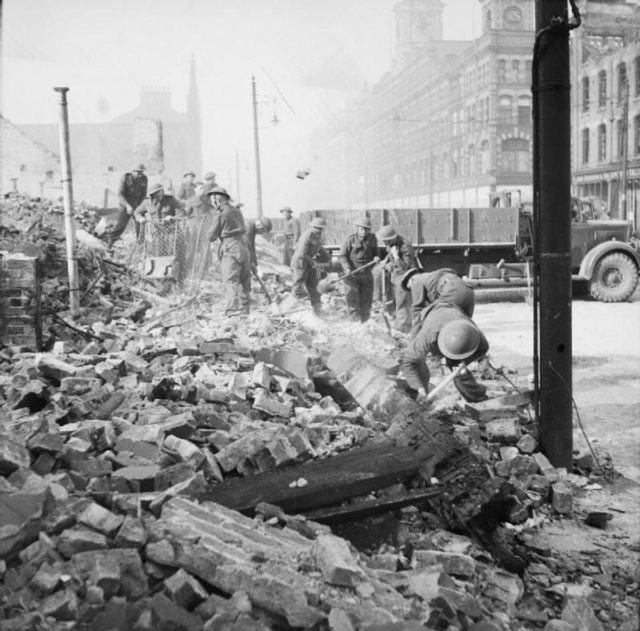
As the water works had been decimated, there was little or no water pressure to fight the fires, so the city burned virtually unchecked. Some 55,000 homes had been destroyed, over half the houses in the city, leaving over 100,000 people homeless. Two hospitals were damaged, eleven churches were destroyed, and two schools rendered inoperable.
The Luftwaffe targeted Belfast because it was a manufacturing center and crucial for the British war effort.. Germany, therefore, saw Northern Ireland as a legitimate target and sought to stop the flow of materials into England.
The shipyards at Harland and Wolff employed 35,000 people and were the largest in the world. They built ships for the Royal Navy, and some of the most renowned were the aircraft carriers HMS Formidable and Unicorn as well as the cruisers HMS Belfast and HMS Penelope. This shipyard as well as others in Belfast renovated and repaired over 3,000 ships for the Royal Navy as well as 500,000 tons of merchant ships; a formidable asset to the English war effort.
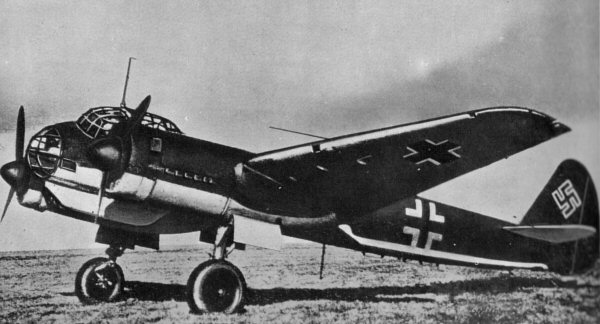
Not only did Belfast manufacture ships, but Short Brothers built aircraft; most notably the Sunderland Flying Boat and the Stirling long range bomber. Bofors anti-aircraft shells were produced in the hundreds of thousands by James Mackie and Sons, and Churchill tanks were built by Harland Engineering Works. The Irish linen industry produced thousands of yards of high-quality aero-linen cloth that was used for covering airplane fuselages. Other smaller industrial enterprises produced gun parts, mountings, aircraft parts and all types of ordinance parts for shells and weapons.
Papers recovered after the war detailed the German’s understanding of Belfast and they had intelligence that Belfast was protected by just seven anti-aircraft batteries; the most abysmal defenses in all of Great Britain. The Germans identified the following areas as strategic targets, Harland and Wolff Ltd shipyard, the Short Bros. aircraft factory, the Belfast power station, the Rank & Co mill, and the Victoria Barracks.
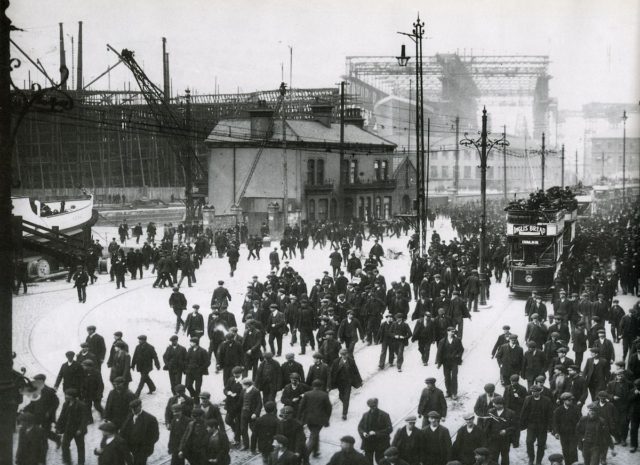
On the night of the 7-8th April 1941, a small raid took place. It is thought that this raid was designed to test the Belfast defense set-up. As there was little in the way of defense, the major raid took place a little over a week later on the 15th April with devastating effects on the city. The third Luftwaffe raid took place on the night of the 4-5th May 1941 with 150 people killed, but thousands of incendiary bombs were dropped. The last raid took place on the night of the 5-6th May 1941.
The UK government faced considerable anger as there were only 200 public shelters. There were no searchlights as they had only just arrived for installation and there was no smokescreen ability and no barrage balloons. In short, the city was woefully unprepared for such an attack. The Irish, south of the border responded immediately to calls for help from their Northern Irish neighbors. Firemen and tenders were sent to assist and whatever help could be given was given to the people of Belfast.
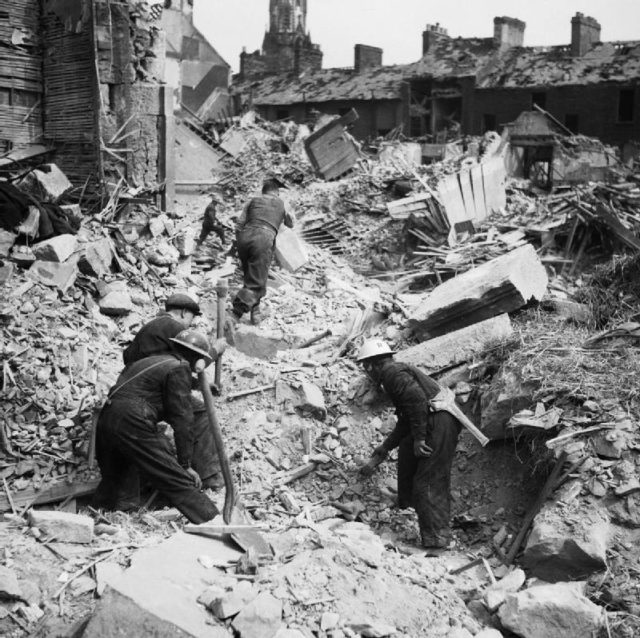
This raid was highly successful from a German point-of-view, and it certainly curtailed the ability of the Northern Irish to assist their English brethren. It is not clear how the Government of Northern Ireland could have been so woefully unprepared when so much effort had gone into preparations around London and other cities.
